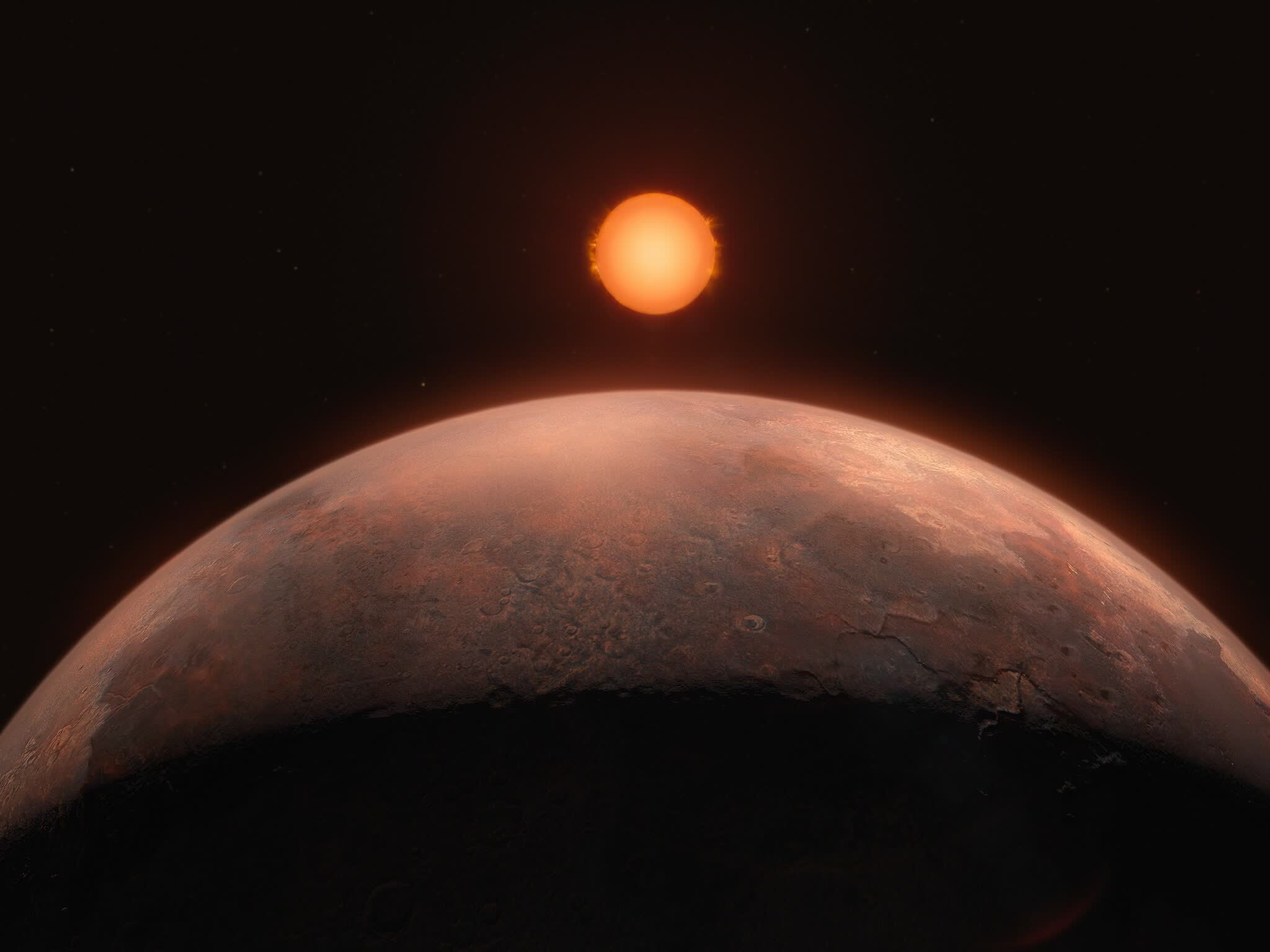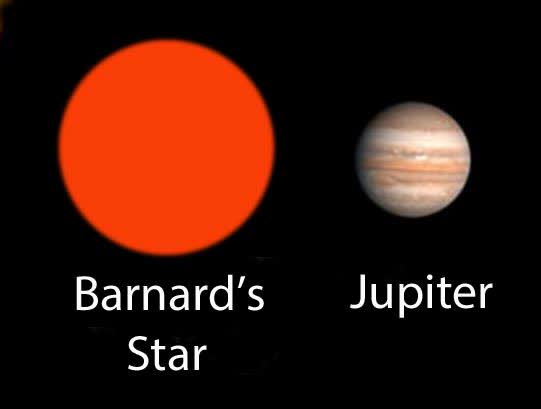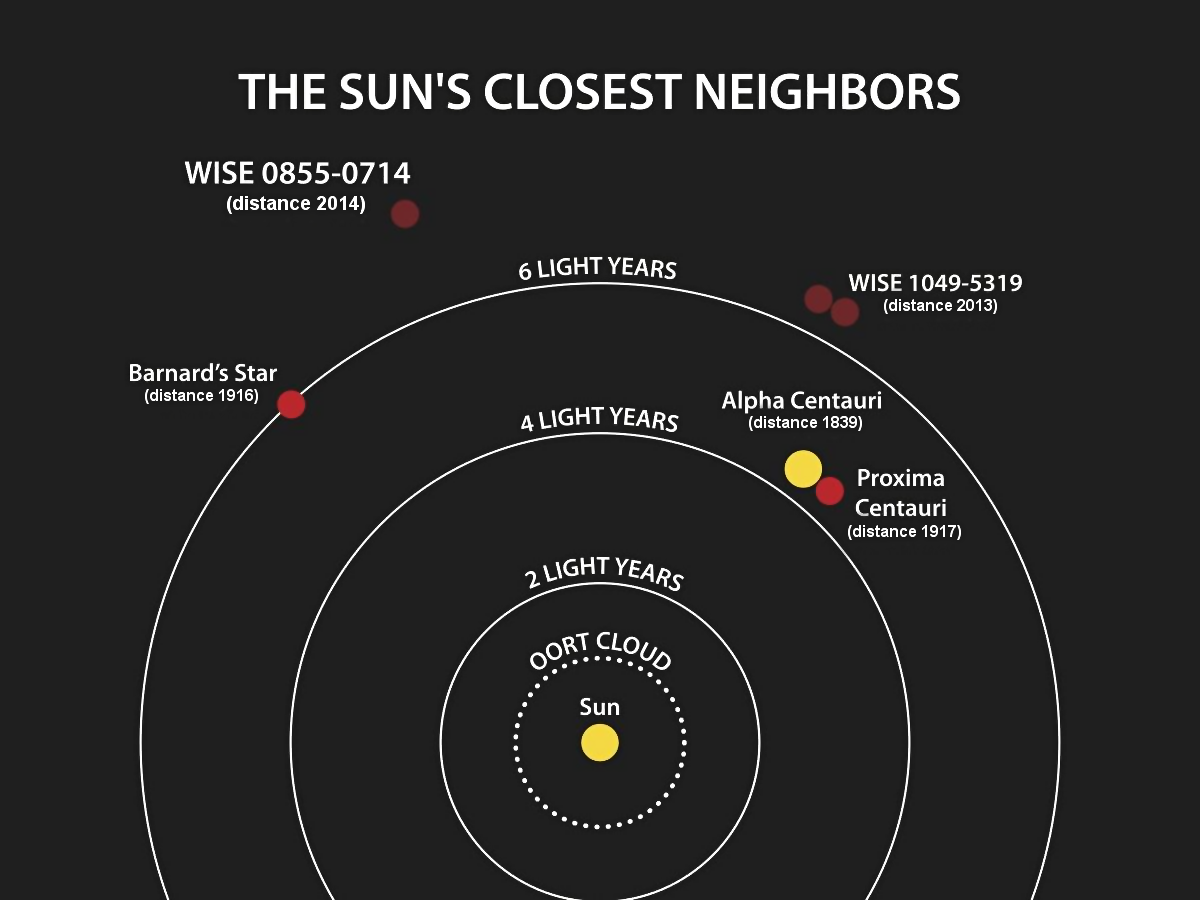Why it matters: Worlds similar to Earth are the most highly-prized discoveries amid the search for exoplanets. New techniques designed to make Earth-like planets outside the solar system easier to detect have uncovered a small world orbiting a star practically next door to us. Although the planet probably isn't habitable, the finding concludes years of speculation and controversy regarding whether any planets orbited this star.
Astronomers using the European Southern Observatory's Very Large Telescope have confirmed the existence of at least one exoplanet orbiting Barnard's star, one of the closest stars to our solar system. The planet is small, hot, and orbits the star rapidly.
The planet, dubbed Barnard b, takes about three Earth days and three hours to orbit its host star and is at least half the mass of Venus (or around three times the mass of Mars). Although Barnard's star is a red dwarf, Barnard b is still too close to it to fall within its habitable zone.
Scientists searching for evidence of planets outside our solar system frequently find gas giants like Jupiter or Neptune, as their large size and strong gravitational pull make them easier to detect. To find more small, rocky exoplanets, astronomers recently began focusing on red dwarfs.
Red dwarfs are much smaller and cooler than our sun. Thus, planets orbiting them tend to be small and orbit closely and rapidly. This behavior allows scientists to confirm their existence by watching those orbits over days or weeks instead of years.
Moreover, the habitable zone, the part of a solar system that is the right distance from the star for liquid water to exist on a planet's surface – a prerequisite for life – is much closer around a red dwarf than around sun-like stars. However, Barnard b is still too close. At about 0.0229 astronomical units from Barnard's star – far closer than Mercury is to our sun – its surface temperature is likely around 260 degrees Fahrenheit.
Barnard b is the first planet confirmed to orbit Barnard's star after prior candidates were debunked, the most recent of which was reported in 2018. The findings that confirmed Barnard b have also proposed three more planets, all orbiting too close to lie within the habitable zone. The furthest of these planets would orbit the star in just under a week.
Located six light years away, Barnard's star is the second closest solar system to Earth and the closest lone star. The closest system is Alpha Centauri, around four light years away, which contains three stars and a few planets.
Artist representation of Barnard b. Image credit: ESO/M. Kornmesser


